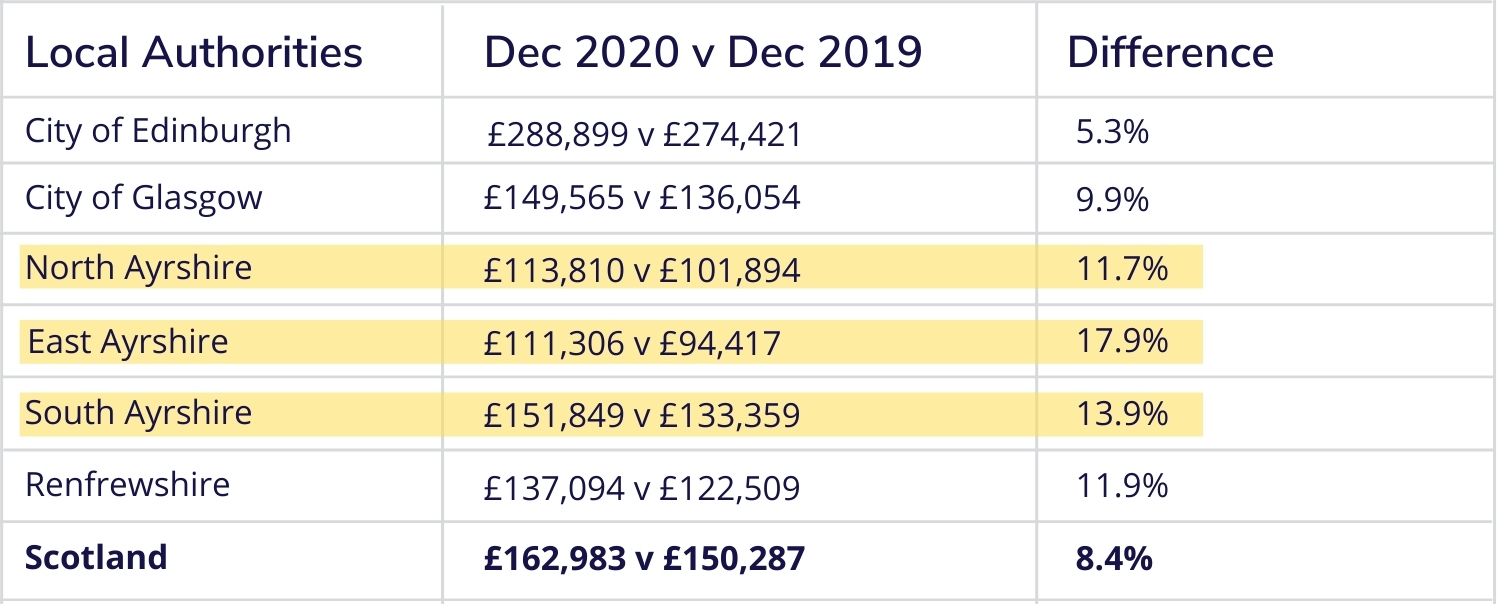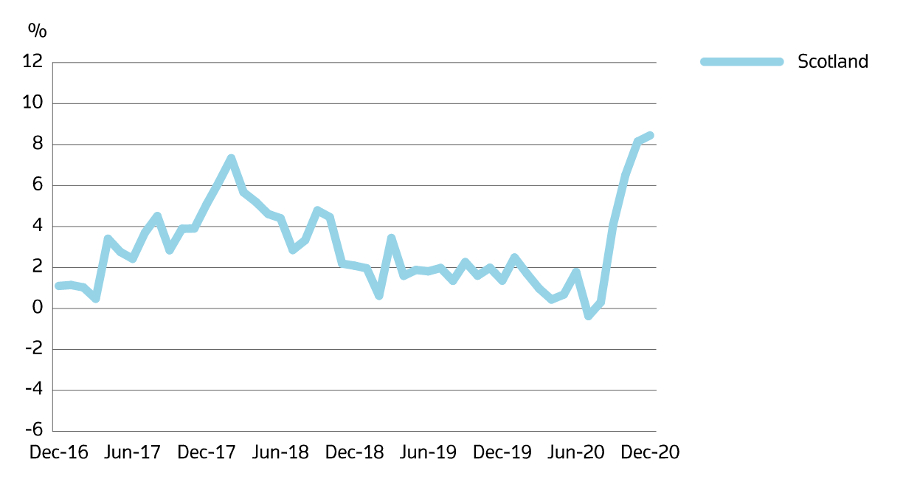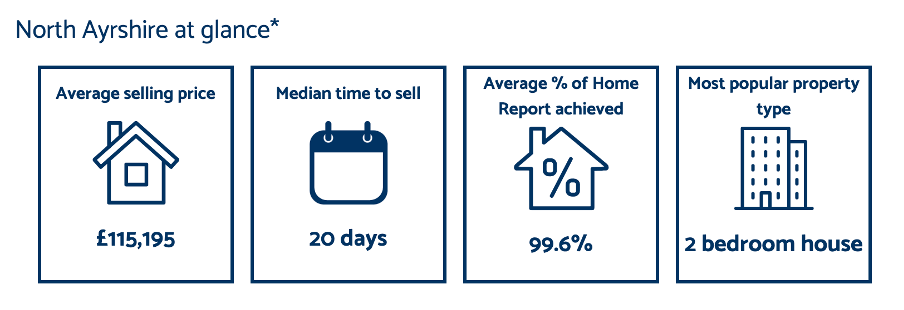How has COVID-19 impacted the Scottish Property Market in 2021?
For the first time in modern history, both UK and Scottish house prices have risen during a recession. While Scotland continues to navigate its way out of lockdown, we explore what impact COVID-19 has had on the Scottish property market, particularly for Ayrshire, Glasgow and the West, and the predictions for the months ahead.
Scotland’s Solicitors Quickly Adapt to Facilitate Consumer Demand
When restrictions were put into play at the end of March 2020, homeowners, agents, and solicitors were faced with unprecedented changes to the standard conveyancing regime.
Social distancing measures were quickly introduced, the Scottish Government advised that all house moves be delayed, and not long after, in-person property viewings and valuations were no longer allowed. Nevertheless, after two weeks of lockdown, the housing market introduced virtual viewings and arrangements to facilitate on-going buyer interest, with the intention of completing property transactions when rules allowed.
Restrictions also meant homes could not be surveyed, and as most properties in Scotland require a Home Report before brought to market, there was a significant decline in volume of new property listings during the first month of lockdown throughout Scotland.
Scottish House Prices Rise: Ayrshire see the biggest increase in the country
So, as with most industries in March 2020, the future of the property market was unknown. However, buyer and seller interest remained not only prominent, but increased. After properties were brought to market, official figures by HM Land Registry found that the average house price in Scotland increased by 8.4% over the year, with transactions rising by nearly a third. The graph below accurately depicts the surge in Scotland against pre-pandemic years:
Most notably, all three council areas in Ayrshire witnessed the largest mainland increase. North Ayrshire was up by 11.7%, South Ayrshire 13.9%, and East Ayrshire being up the most by 17.9%. Renfrewshire also saw an increase of more than 10%.

Click here for more information on other local authorities.
What has caused the rise in prices?
Industry leaders believe that lockdowns have led to people seeking more space, with the number of ‘sales agreed’ in the last quarters of 2020 being 36% higher than the same period in 2019.
Paul Hilton, CEO of ESPC, said: “The first three months of 2021 has seen a real spike in property sales compared to the previous year. This is to be expected given how busy the market was at the end of 2020, but the LBTT holiday coming to an end in March may also have contributed to increased sales.”
To aid the financial struggles of COVID-19, the Scottish Government introduced an increased nil threshold on LBTT which was raised to £250,000 for buyers in July 2020. However, the LBTT holiday ended as of 1st of April 2021 in Scotland. As well as this, the Scottish Government provided relief by introducing the three-month mortgage payment holiday for homeowners in March and extending emergency law eviction notice period to protect renters.
Between homeowners looking to upsize, LBTT relief and solicitors and agent’s ability to deliver service remotely, the number of people looking to buy or sell during the pandemic outweighed any negative impact from the pandemic on the property market.
What’s Ahead for House Sales in Scotland?
Industry leaders, such as Savills and ESPC, predict a strong property market in the coming months, as the country sees restrictions ease and we work towards an anticipated new normal. The average Scottish house price is expected to grow further by 3% in 2021, with the overall property market growing more than 22.8% between 2021 and 2025.
What Does This Mean for Homeowners?
In the first instance, we highly advise you speak to a solicitor to get an accurate understanding of the market and your local authority. If you are in Ayrshire, Prestwick, or Glasgow, you can get in touch with us here.
As the property market has soared and is set to continue for the rest of the year, particularly in Ayrshire, 2021 could be assumed a profitable year to relocate.
The image below gives an overview of the most frequent property transactions this year in North Ayrshire:
What Does This Mean for Private Landlords?
For the Scottish Rental Market, surveyors across both Glasgow and Edinburgh found that there has been an increase in flat availability on the market, due to private landlords deciding to sell. John Brown, rental agent of Edinburgh, believes this is due to the “Covid effect”, such as landlords wishing to reduce their portfolios and void periods between tenancies. As well as that, there are added costs of new Energy Performance legislation for landlords.
For the privately rented sector (if you own and lease your own property to tenants), energy efficiency standards have already been introduced. Since October 1st, 2020, any new tenancy is now required to have an EPC of at least band E and by the 31st of March 2025, all properties will require to have at least EPC band D.
Overall, despite initial concern for the property market, most authorities in Scotland have seen an increase in the number of house sales and prices, which is set to continue for 2021.
If you have any questions, please do not hesitate to get in touch with us!

